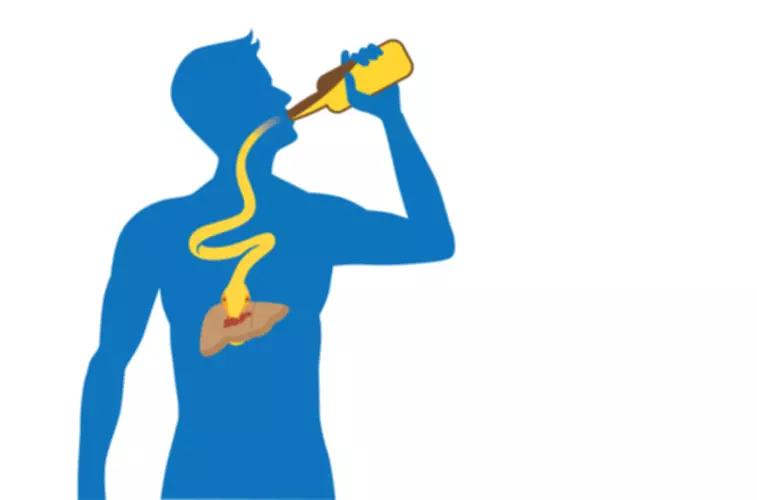Halfway houses are very similar to other sober-living residences, and it’s no surprise that people often confuse them. At Gratitude Lodge,we work with most insurance plans to cover the costs of treatment. In response, policymakers have attempted to create laws allowing states to regulate sober living homes. Your friends or family members may tempt you with alcohol or other drugs by consuming them in front of you. It would also be helpful if the house were near your work or school, a grocery store, public transit, a laundromat, and a healthcare provider. If you are seeking drug and alcohol related addiction rehab for yourself or a loved one, the SoberNation.com hotline is a confidential and convenient solution.
Choosing a Sober Living Home
When promoting your sober living house, be clear and straightforward in your messaging. Clear marketing messaging will help you attract the ideal target audience as applicants for your sober living investment. Remember that drug and alcohol addiction can affect people from any walk of life, gender, or age. With this in mind, prepare that you may have a mix of residents at any given time. As with any new venture, effective marketing of your service is a significant step.
What are Sober Living Homes?
One bill to regulate sober living homes advances, while another is rejected – Arizona Mirror
One bill to regulate sober living homes advances, while another is rejected.
Posted: Fri, 22 Mar 2024 07:00:00 GMT [source]
You’ll learn financial responsibility by paying rent, time management by following the house schedule, and self-care practices crucial for maintaining sobriety. These skills instill a sense of responsibility and prepare you for a successful transition to independent living. Living among peers who are also committed to a https://ecosoberhouse.com/ sober lifestyle offers a unique form of support and understanding. This sense of belonging can significantly reduce feelings of isolation and increase your motivation to maintain sobriety. Regular meetings and group therapy sessions within these communities further bolster your emotional and psychological resilience.
Common Challenges for New Sober Living Homes
- Some sober living houses may be placed in neighborhoods with high crime rates.
- A halfway house – also referred to as a transitional or sober living home – is a group home for people who are trying to recover from substance abuse and addiction.
- Although halfway houses share a lot in common with sober-living homes, there are a few key differences that set them apart.
- Leaving the structure of the treatment program can be very disruptive to your sobriety, so treatment programs have strict schedules filled with counseling, group therapy, and participatory activities.
- Other times, they function as a more intensive residential facility, meaning that there is consistent recovery programming, requirements, and staff present in the house.
- Sober living in New York is possible but for those who are newly facing the challenges of recovery, it can be a difficult battle to win.
That can be a good time to get to know future roommates and decide whether that particular house is best for you. A variety of other studies have also found that sober living homes appear to be an effective component of the recovery process. Several factors determine length of stay, such as the severity of the addiction, a person’s history of substance abuse, their recovery progress, sober house ability to follow rules and ability to pay rent. The homes usually include a kitchen, common areas and laundry accommodations. In the journey towards sobriety, the ambiance and the support system around you play pivotal roles. Sober living homes understand this fundamental need and strive to provide an environment that not only supports but enhances your recovery process.
Understanding its importance could be the key to not just achieving sobriety but maintaining it in the long run. The types of services and programs that each sober living home offers will vary depending on the residence and a person’s specific needs. If you or a loved one is transitioning into recovery housing, it’s important to work with your treatment team to make sure the residence offers the appropriate care. A halfway house is commonly known as a type of recovery housing that helps people in incarceration transition from addiction treatment to a more independent, healthy lifestyle. Many owners of sober living homes find themselves in this industry after a personal experience.
- Meetings were held both in the home and in neighboring organizations in the community.
- Creating a strategic and standard application method can help you maintain your credibility as a sober living home in your region.
- Sober living houses have structured schedules, meetings, and rules to help promote a positive environment free from temptation and distractions.
- If you are seeking drug and alcohol related addiction rehab for yourself or a loved one, the SoberNation.com hotline is a confidential and convenient solution.
- In order to live in a sober house, residents must submit to random drug testing and they must pass.

Since opening in December, only one resident relapsed and was asked to leave. The owners, Ryan Magill and Jaron Shoptaugh were posting “Rooms for Rent” signs around town. Shanon admits she removed the signs immediately and then presented the idea to the owners. They went for it, agreed to lease the house to the organization, perhaps persuaded by the Conleys’ passion for the project.

In addition, these homes frequently establish study sessions, transportation to and from campus, and career testing to help residents identify a path for their futures. Most of these homes are privately owned in quiet, peaceful neighborhoods; however, some homes are owned by businesses or charities. These homes are generally less structured than inpatient rehab programs, but there are still rules that all residents must follow in order to stay in the home. Residents can come and go as they please, but must be home by a certain time and they may be required to work and/or go to school during the day. Sober living homes are structured environments designed to foster recovery and maintain sobriety. Unlike a typical residential home, these settings are tailored to meet the unique needs of individuals recovering from addiction.

Substance abuse may have taken years of your life, so sober living homes can help you regain them. The former president and CEO of a Whittier medical clinic was sentenced today to 124 months in federal prison for submitting fraudulent billings to a Medi-Cal health care program that… Ultimately, the ride to the house in Victor begins the transition from a life of addiction to a place where sobriety is the key to starting over.
- In sober living homes, you’re not just renting a room; you’re investing in your future.
- A 2006 study published in the American Journal of Public Health found that most Oxford House residents stayed more than a year, but some residents stayed more than three years.
- However, you might be wondering what happens now that the detox is over, you’ve completed your stay at an addiction treatment center, and it is time to go home.
- Sober living facilities are often thought of as a sober person’s pipeline to life in mainstream society.
- Unlike many halfway houses, sober homes are not monitored by state agencies.
- As Murray and other veterans put it, sobriety is important for veterans suffering from addiction, but it’s not enough if veterans are dealing with PTSD.
- Ask yourself questions about the type of residents you want to attract and how you will vet applicants.
- All of a sober house’s residents are expected to pursue better health and a substance-free life.
- Even so, there are certain rules that tend to be common among most of these sober living facilities.